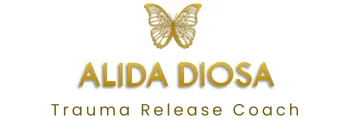
Unleashing the Power of Embodiment: From Disconnection to Vibrant Living
"How we relate to our own bodies influences how we relate to all aspects of life."
— Patricia de Jonge
A Life Once Lived in Disconnection
For years, fear and disconnection consumed my life. Daily anxiety, seizures, and an ever-present dread of leaving my bedroom left me feeling trapped and cut off from my own body. I was unable to connect with others and lacked the empathy and understanding that comes with a strong sense of embodiment. I was living in a prison of my own making, drowning in fear.
But my experience inspired me to seek out ways to heal and reconnect. That’s when I discovered the Subtle Body Method. Through this work, I learned to access my body’s wisdom and rebuild a relationship with myself that was deeper and more alive than I had ever known. It was so powerful that I became a certified practitioner myself, so I could help others walk this same path back home to themselves.
What Embodiment Really Means
When people hear “embodiment,” they often picture yoga poses, breathwork, or perfect posture. But true embodiment isn’t a practice—it’s a relationship. It’s how deeply you inhabit your own skin, how willing you are to feel your sensations, how safe you are in your nervous system. It’s the bridge between body, mind, and spirit.
✨The Science of Embodiment
Research in neuroscience and trauma therapy confirms this truth. Dr. Stephen Porges’Polyvagal Theoryshows us that our capacity to feel safe, connected, and alive is governed by our autonomic nervous system. Dr. Peter Levine’s work demonstrates how unresolved trauma lives in the body and blocks our natural flow of life. And studies oninteroception—the brain’s ability to sense the internal state of the body—prove that awareness of bodily sensations is directly tied to emotional regulation and resilience. When you reconnect with your body, you’re not just “feeling good”—you’re restoring your biology’s capacity to heal and thrive.
The ROOT Framework for Embodiment
To help my clients (and myself) move from disconnection to deep presence, I developed a simple framework:ROOT.
R — Recognize the Disconnection
Notice where you’ve gone numb, checked out, or overridden your body’s signals. Awareness is always the first step.O — Open to Sensation
Instead of shutting down or escaping, allow yourself to feel—even if what you feel is discomfort. Sensation is the language of the body.O — Own Your Body’s Truth
Every sensation carries information. Own the message: your tension, your ache, your flutter in the chest—they all have meaning. Trust your body’s intelligence.T — Transform Through Practice
Choose practices that rewire safety and connection into your system—movement, breath, grounding, somatic release. Transformation comes through repetition and compassion.
Living Embodiment: From Checklists to Invitations
Embodiment isn’t about “doing exercises.” It’s about remembering yourself. Here are some invitations:
Sit quietly and place a hand on your belly. Ask:What truth are you holding for me today?
Walk barefoot outside, not to “ground,” but toremember that the earth supports you.
Move your body in a way that feels joyful, not performative. Let your body lead instead of your mind.
When you eat, pause and notice the colors, textures, and sensations.What does my body say yes to right now?
✨ At this stage of the journey, many clients realize that their struggle with embodiment is also a struggle with body-image—trusting their body enough to live inside it fully. This is why I created theBody Love & Self-Image Awakening Session, a focused experience designed to help you meet your body with compassion, acceptance, and respect. It’s an opening into deeper embodiment that isn’t about fixing yourself, but finally befriending yourself.
What You Need to Know
Q: What does embodiment really mean beyond yoga and posture?
Embodiment is not about looking a certain way or perfecting physical form—it’s about rebuilding the fractured relationship between body, mind, and soul. It’s a lived experience of being at home in yourself.
Q: Why is embodiment so important for healing trauma and stress?
Research from Polyvagal Theory (Stephen Porges) and trauma expert Peter Levine shows that unresolved stress lives in the body, not just the mind. Practices of embodiment help complete those unfinished cycles and restore balance to the nervous system.
Q: How can I start if I feel totally disconnected from my body?
Begin small—notice one sensation at a time. A hand on your heart, a mindful breath, or a gentle walk in nature are all enough. Embodiment begins with awareness, not perfection.
Q: Can embodiment help with body image struggles?
Yes. When you shift fromhow your body lookstohow your body feels and speaks, self-image softens into self-acceptance. This is where programs like theBody Love & Self-Image Awakening Sessionprovide safe guidance for rebuilding trust and compassion with your body.
Q: What if I’ve tried before and it didn’t work?
Embodiment is not a one-time practice—it’s a journey. Each attempt builds capacity. With the right support, like somatic therapy or the Subtle Body Method, the process becomes safer and more sustainable.
Q: How do I know when embodiment is working?
Signs are subtle at first—less tension in your jaw, a deeper breath, a sense of being more present in your skin. Over time, these moments expand into a life where joy, clarity, and connection feel natural again.
Reflection Prompts
Take a moment with these questions—not to answer intellectually, but tolisten with your body’s wisdom:
When was the last time you felt at home in your own skin?
What sensations do you avoid the most, and what might they be asking you to notice?
What would change in your relationships if you trusted your body’s truth in the moment?
Your reflections might surprise you. Emma, one of my clients, discovered that when she paused to listen, her body had been whispering the truth all along:“I don’t want to shrink anymore.”Your body may reveal the same gentle compass waiting inside you.
Embodiment is not a destination—it’s a way of living. By recognizing disconnection, opening to sensation, owning your truth, and transforming through practice, you root yourself back into life. This is how you reclaim joy, safety, and vitality.
Answering the Body’s Call
If this content resonates with your own story of disconnection, know that you are far from alone. Many people describe feeling like strangers in their own skin—longing to feel present, but caught in cycles of fear, tension, or numbness. This isn’t weakness. It’s your body’s way of protecting you.
The truth is that restoring embodiment isn’t about “trying harder” or forcing yourself into practices that don’t feel safe. It’s about gently meeting the places in your nervous system where disconnection began, and allowing your body to guide you back into trust, vitality, and presence.
My First Steps to Freedom Session is a focused, 50-minute trauma-informed experience designed to help you reconnect with your body’s wisdom, release protective patterns that keep you distant from yourself, and rediscover the joy of living fully embodied.
✨ Use code GET50NOW for 50% off your session (first 3 bookings this week). 👉 Click here to book your session
💛 A gentle reminder: You don’t have to spend years carrying what feels too heavy. There comes a moment when you choose “enough.” That’s where real change begins—and I’m here to walk with you through it, safely.-Alida
🎧 This theme continues in a spoken format inside the Trauma Awareness Podcast. LISTEN TO Episode 15 : Reclaim Your Vitality with the ROOT Framework
Related Posts You May Love 💜
Self-Love Is True Self-Care
The Quiet Sanctuary: Self-Isolation as a Path to Inner Harmony
The Many Faces of Social Anxiety: A Path to Self-Understanding
Related Resources & Further Reading
Scientific Research
Embodiment research shows that cognition, emotion, and decision-making are deeply shaped by bodily states. Neuroscience and psychology literature describe how perception, memory, and meaning emerge through sensorimotor experience rather than abstract thought alone.
Research on interoception (the brain’s ability to sense internal bodily signals) demonstrates its central role in emotional regulation, self-awareness, and mental health. Impaired interoceptive awareness has been linked to anxiety, dissociation, and reduced emotional clarity.
Embodied cognition frameworks further explain how trauma disrupts body-based processing, leading individuals to rely excessively on cognitive control while disconnecting from somatic feedback.
Clinical & Treatment Approaches
Somatic therapies emphasize embodiment as a therapeutic pathway, supporting clients in restoring sensation, movement, and bodily awareness as prerequisites for emotional integration and healing.
Clinical trauma models highlight that embodiment is not about “being present” all the time, but about choice, titration, and nervous system capacity, especially for individuals with trauma histories.
Accessible Overviews
This overview explains embodiment in simple, grounded language, showing how reconnecting with bodily experience improves emotional regulation, resilience, and self-trust without forcing exposure.





